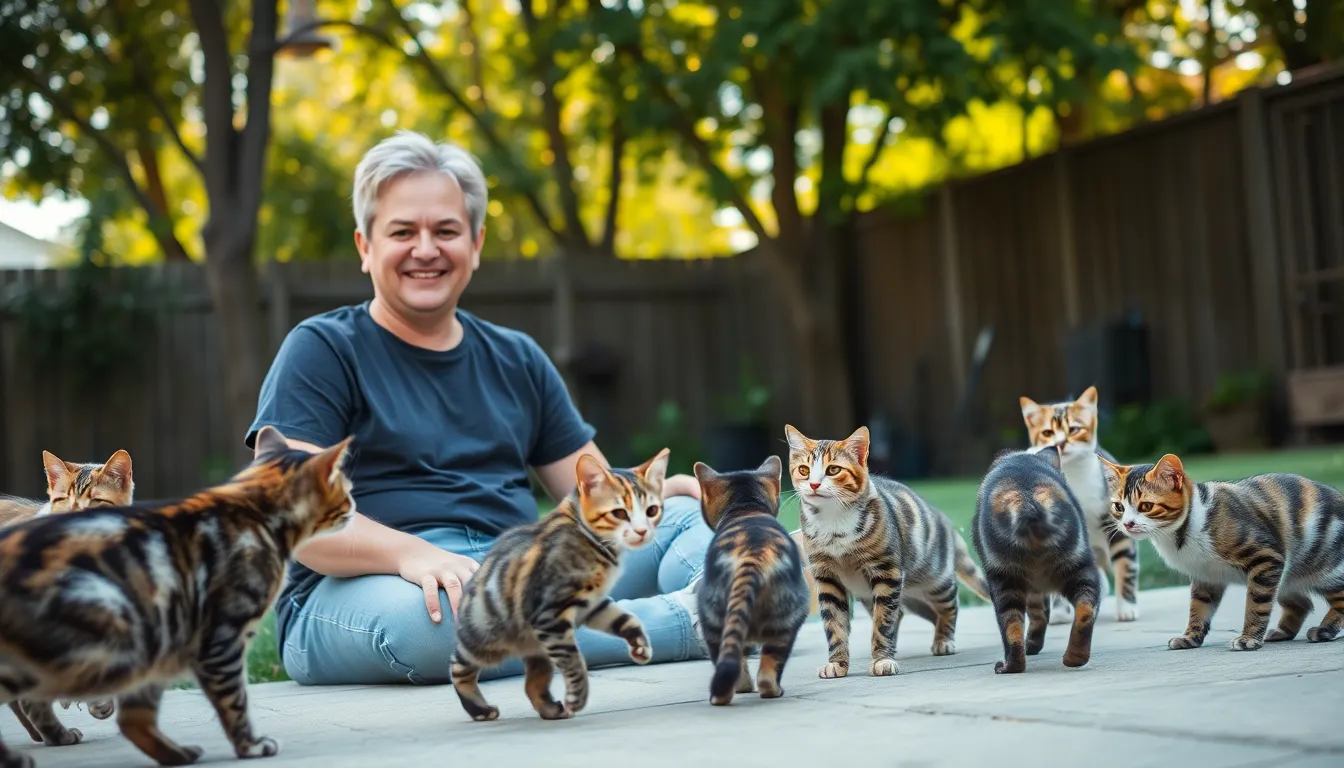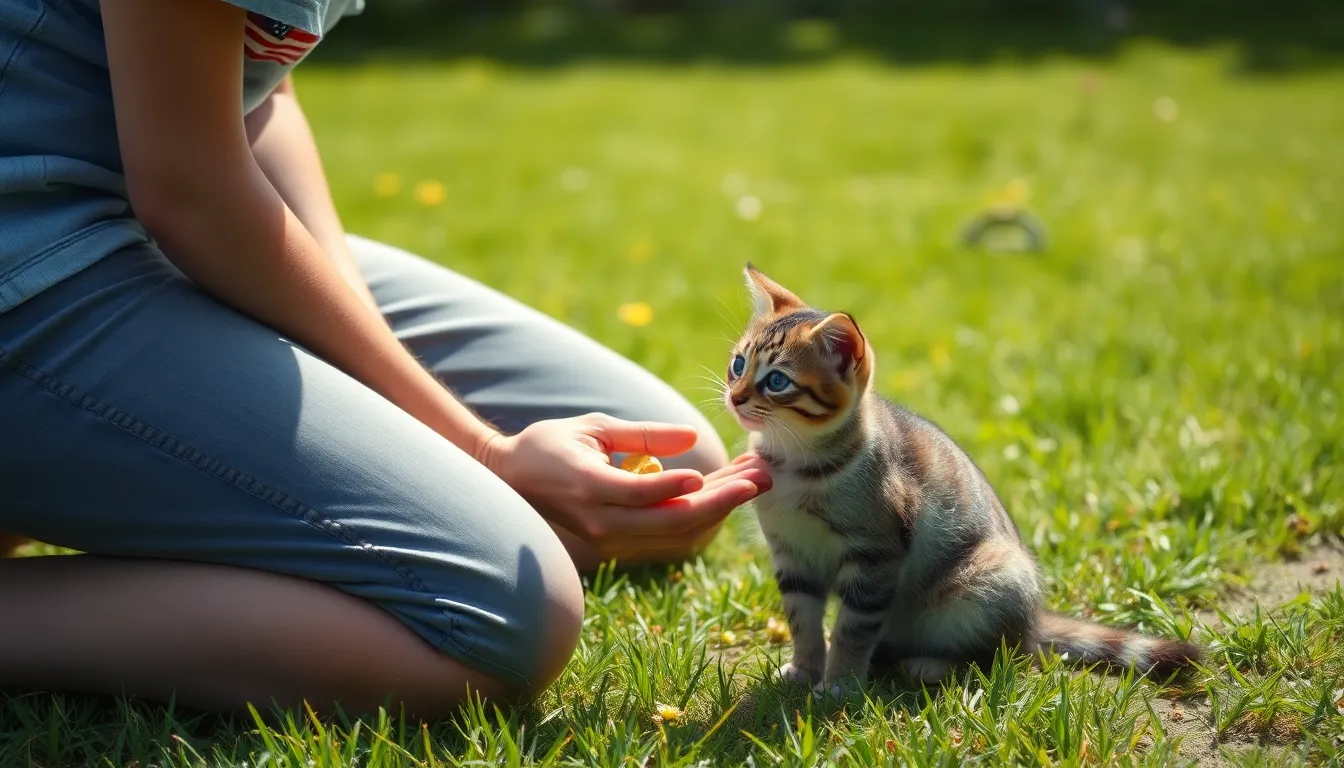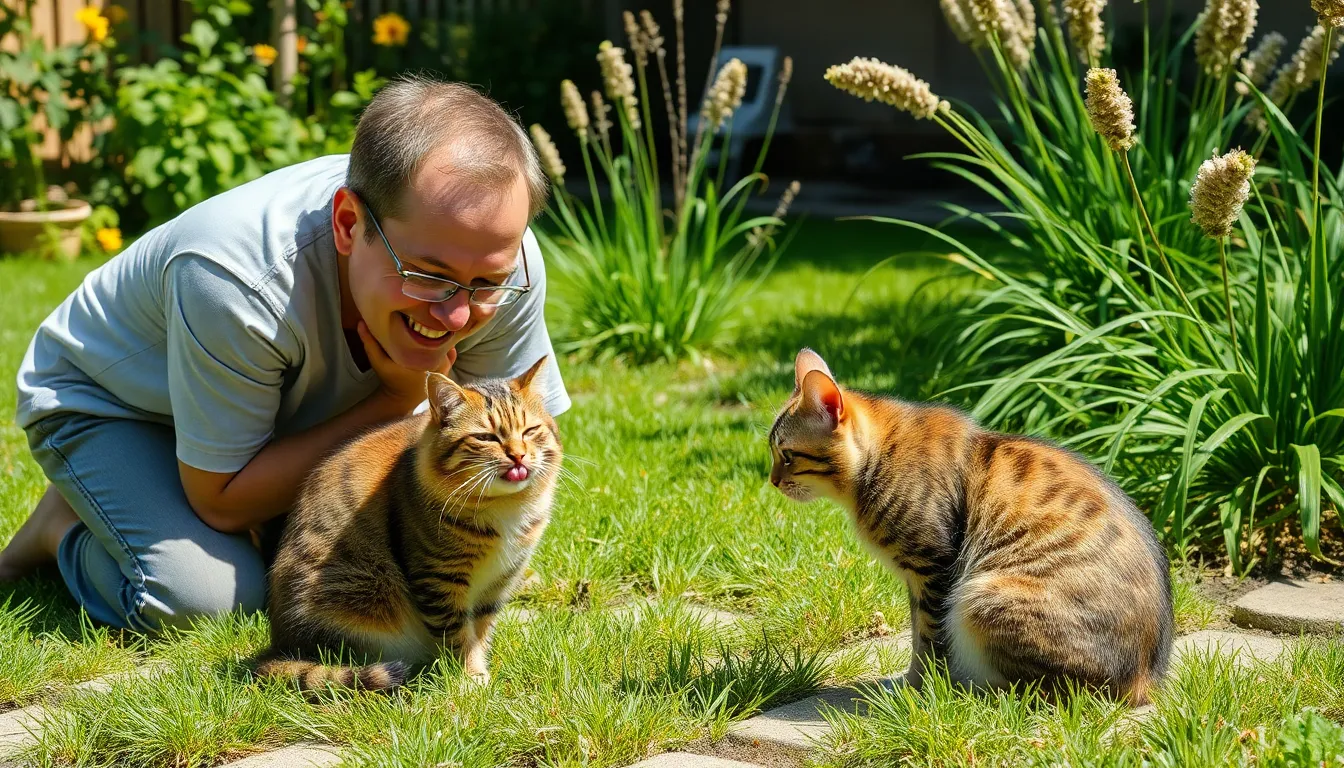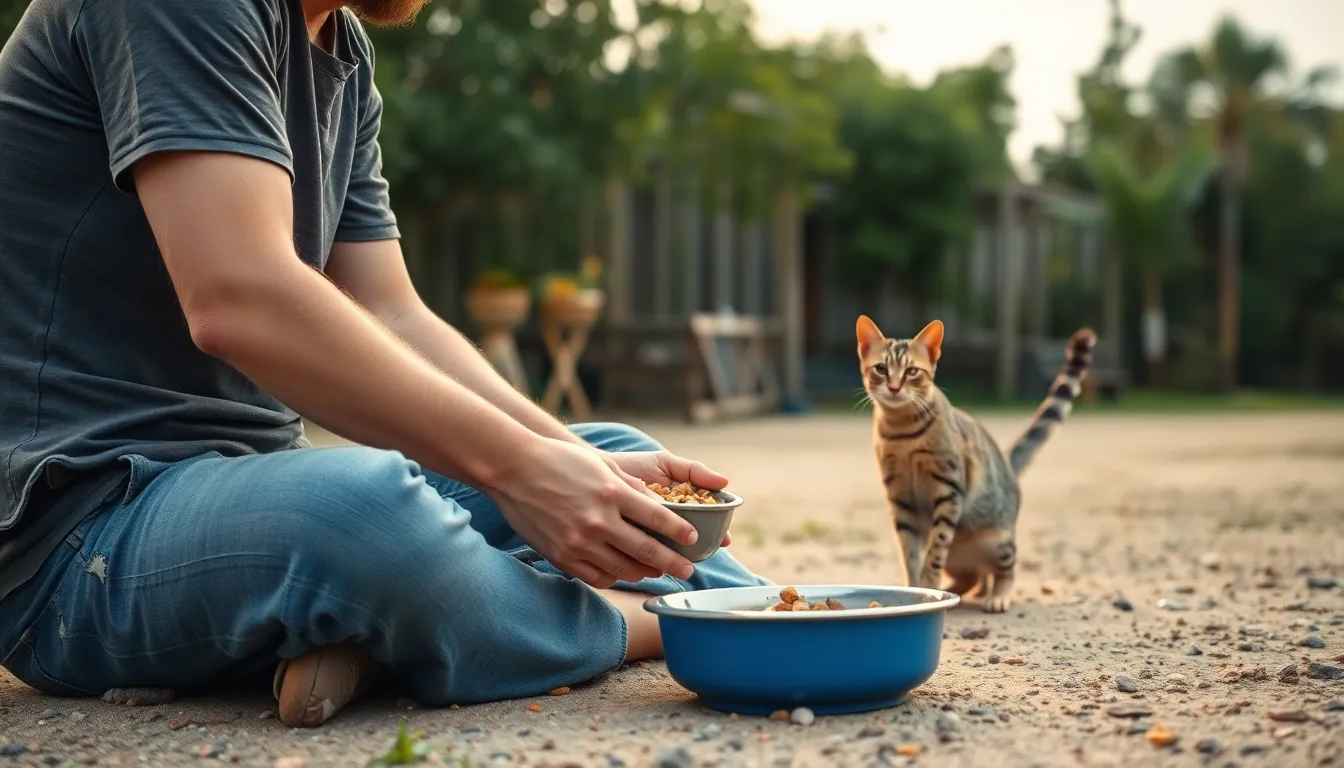Building trust with a feral cat is one of the most rewarding experiences we can have as animal lovers. These independent survivors have learned to be cautious around humans for good reason, making their trust something truly precious and hard-earned.
When we’ve been working with a feral cat for weeks or months, we often wonder if we’re making real progress. Are they actually warming up to us, or are we just wishful thinking? The signs aren’t always obvious, and misreading their body language can set back our relationship-building efforts.
Understanding the subtle signals that indicate growing trust can transform how we approach these remarkable cats. From changes in their posture to shifts in their daily routines, feral cats communicate their comfort level through exact behaviors that many people overlook. We’ll explore the key indicators that show you’re on the right path to earning their confidence.
Understanding Feral Cat Behavior
Feral cats display fundamentally different behavioral patterns compared to domesticated cats due to their lack of early human socialization. These cats operate on survival instincts and maintain heightened awareness of potential threats in their environment.
Fear-based responses dominate most feral cat interactions with humans. Wild cats exhibit flight responses when humans approach within 10-15 feet of their location. Crouching low to the ground indicates their readiness to escape quickly if danger presents itself. Ears pinned back against their heads signal extreme stress and defensive positioning.
Territorial behavior shapes how feral cats perceive human presence in their established areas. These cats mark territories through scent glands located on their cheeks and paws. Multiple cats may share feeding territories while maintaining separate sleeping and shelter areas. Hissing and growling occur when humans enter spaces the cats consider their exclusive domain.
Communication patterns among feral cats rely heavily on body language rather than vocalizations. Tail positions communicate emotional states with vertical tails indicating confidence and tucked tails showing fear. Eye contact serves as a threat assessment tool rather than a friendly gesture. Slow blinking demonstrates non-aggressive intentions between cats.
Survival instincts drive feral cats to remain constantly vigilant during daylight hours. These cats typically emerge for feeding during dawn and dusk periods when fewer humans are active. Food sources determine their daily movement patterns and territorial boundaries. Weather conditions significantly impact their behavior with extreme temperatures forcing them to seek shelter rather than forage.
Social structures within feral colonies follow established hierarchies based on age and territory establishment. Dominant cats eat first at feeding stations while subordinate cats wait their turn. Mother cats teach survival skills to their kittens through demonstration rather than play-based learning. Adult cats maintain loose social bonds primarily centered around shared food sources and shelter locations.
Physical Signs of Trust

Physical manifestations of trust in feral cats represent the most tangible evidence of a developing bond. We can observe these behaviors as clear indicators that a previously fearful cat has begun to feel secure in our presence.
Relaxed Body Language
Posture changes dramatically when feral cats start trusting humans. We notice their bodies becoming less tense and defensive as they shift from survival mode to a more comfortable state. Crouching behaviors diminish significantly, replaced by normal standing or sitting positions that indicate reduced stress levels.
Muscle tension decreases throughout their entire frame, creating visible differences in how they carry themselves. Their shoulders drop from the raised, defensive position typical of fearful cats. Movement patterns become more fluid and natural rather than the jerky, hypervigilant motions we see in untrusting ferals.
Breathing patterns also shift noticeably as trust develops. Rapid, shallow breathing associated with fear gives way to deeper, more relaxed respiratory rhythms. We can observe this change particularly when cats remain in our vicinity for extended periods without showing distress signals.
Eye Contact and Slow Blinking
Eye behavior provides crucial insights into a feral cat’s emotional state about human presence. Soft, relaxed eye contact replaces the intense, fearful staring or complete avoidance we typically see in untrusting ferals. This shift indicates the cat no longer perceives us as an immediate threat requiring constant surveillance.
Slow blinking emerges as one of the most reliable trust indicators in feral cats. We recognize this behavior as the feline equivalent of a trust signal, though it appears less frequently in ferals compared to domestic cats. The deliberate, measured closing and opening of eyes demonstrates a level of comfort that allows them to briefly reduce their visual vigilance.
Pupils provide additional information about trust levels. Dilated pupils often indicate fear or stress, while normal pupil size during our presence suggests growing comfort. We observe this transition as cats progress from hyperalert states to more relaxed interactions with humans.
Tail Positioning
Tail movements and positions offer valuable insights into feral cat emotions and trust levels. We see dramatic changes in tail behavior as trust develops, moving from defensive positions to more neutral or positive displays. Low, tucked tails characteristic of fearful cats gradually shift to normal carrying positions.
Bristled or puffed tails become less common as trust increases. We notice this aggressive defensive display disappearing as cats become comfortable with human presence. The tail returns to its normal size and texture, indicating reduced stress and fear responses.
Twitching patterns change significantly in trusting feral cats. Rapid, agitated tail movements give way to slower, more controlled motions or complete stillness. We observe this transition as particularly meaningful because it demonstrates the cat’s ability to remain calm rather than in constant fight or flight readiness.
Behavioral Indicators of Growing Trust

Behavioral changes represent the most reliable evidence that a feral cat’s emotional state is shifting from fear to acceptance. These indicators demonstrate measurable progress in trust development and occur in predictable patterns as cats become more comfortable with human presence.
Approaching You Voluntarily
Voluntary approach marks the most important breakthrough in feral cat trust building. A feral cat that initiates movement toward you demonstrates overcoming their primary survival instinct of flight. This behavior typically manifests when you’re sitting outside or positioned near their feeding area.
The progression starts with tentative steps taken from a distance of 10-15 feet. Initially cats pause frequently during approach and maintain escape routes. Advanced trust shows through direct paths toward you without hesitation or backtracking movements.
Timing patterns reveal comfort levels as well. Cats approaching during daylight hours indicate higher trust than those only approaching at dawn or dusk. Regular approach behavior occurring multiple times per week signals established trust rather than opportunistic food seeking.
Allowing Closer Proximity
Proximity tolerance demonstrates measurable trust advancement through exact distance reductions. Feral cats typically maintain 20-30 feet between themselves and humans during initial contact phases. Trust development shows through gradual acceptance of closer distances without triggering flight responses.
Physical positioning changes accompany proximity acceptance. Cats maintaining feeding routines while you remain within 10 feet show important progress. Sleeping or resting behaviors continuing with you present within 5-8 feet indicates advanced trust levels.
Territory sharing becomes evident when cats permit your presence in their established feeding or sleeping areas. This behavior contradicts their natural territorial instincts and represents major trust milestones. Cats choosing to remain rather than relocate when you enter their space demonstrate comfort with shared territory.
Vocalizations and Communication
Vocal communication from feral cats carries exceptional significance since these cats rarely vocalize around humans. Meowing or other vocal sounds directed toward you indicate familiarity and potential trust development. This behavior occurs less frequently than other trust indicators but holds substantial meaning when present.
Sound patterns differentiate between types of communication. Soft chirping or trilling sounds suggest positive recognition rather than distress. Short meows accompanying approach behaviors often signal greeting attempts or food requests.
Timing context affects vocalization interpretation. Cats vocalizing during feeding times may demonstrate learned association between you and positive experiences. Vocal communication occurring outside feeding schedules indicates stronger trust connections and social acknowledgment of your presence.
Feeding-Related Trust Signals

Feeding behaviors represent the most reliable indicators of trust development in feral cats. These vulnerable moments reveal a cat’s comfort level more than any other interaction.
Eating in Your Presence
Feral cats eating while we remain nearby demonstrates their first important trust breakthrough. Vulnerability during meals makes cats naturally cautious about human presence, as their survival instincts typically override hunger when threats appear close.
Cats who consume food we provide while maintaining visual contact with us show reduced fear responses. Distance tolerance varies during feeding, with newly trusting cats accepting our presence at 10-15 feet initially. Comfortable cats eventually eat within 3-5 feet of our location.
Timing patterns reveal trust levels through feeding schedules. Cats eating during daylight hours when we’re visible display greater confidence than those feeding only under darkness cover. Regular feeding times with our presence create predictable interactions that build security.
Food placement proximity indicates comfort progression. Cats initially require food placed far from our standing position but gradually accept closer placement as trust develops. Bowl positioning within 2-3 feet of our location marks substantial progress in the relationship.
Accepting Food From Your Hand
Hand feeding represents the highest level of feeding-related trust in feral cats. This behavior requires cats to overcome their strongest survival instincts about human contact and proximity.
Initial hand feeding attempts require exact positioning and movements. Extending our hand with food while remaining still allows cats to approach at their comfort level. Palm positioning facing upward with treats visible reduces perceived threat signals.
Contact tolerance varies during hand feeding interactions. Some cats snatch food quickly while others allow brief finger contact during the exchange. Cats accepting gentle finger touches while eating show exceptional trust development.
Progression from ground feeding to hand feeding occurs gradually over weeks or months. Cats typically accept food placed on flat surfaces near our hands before taking food directly from fingers. Multiple successful hand feeding sessions confirm established trust rather than isolated incidents.
Hand feeding frequency increases as cats become more comfortable with direct contact. Daily hand feeding sessions indicate cats view us as reliable food sources rather than potential threats. Cats seeking hand fed treats actively demonstrate the strongest feeding-related trust signals.
Advanced Trust Behaviors

Advanced trust behaviors represent the deepest level of confidence a feral cat can demonstrate toward humans. These behaviors indicate a important shift from survival mode to genuine comfort and acceptance.
Grooming Themselves Around You
Grooming behaviors in our presence signal profound trust development between feral cats and humans. Feral cats instinctively avoid vulnerable activities when they sense potential threats nearby. Self-grooming requires focus and leaves cats temporarily unable to flee quickly from danger.
Cats that begin licking their fur while we’re present demonstrate they’ve classified us as safe companions rather than predators. This behavior typically emerges after weeks or months of consistent positive interactions. Grooming sessions lasting 30 seconds or longer indicate established comfort levels.
The timing of these grooming behaviors provides additional insight into trust development. Cats grooming themselves during our feeding visits show they’ve integrated us into their safe space. Grooming behaviors that occur outside feeding times represent even stronger trust indicators.
Showing Their Belly
Belly exposure represents one of the rarest and most important trust displays from feral cats. This vulnerable position exposes their most sensitive organs and eliminates quick escape options. Feral cats showing their bellies have overcome their strongest survival instincts.
Rolling behaviors that expose the belly area occur in less than 5% of feral cat trust relationships. These displays typically happen after months of consistent interaction and feeding routines. Cats exhibiting belly exposure behaviors demonstrate they’ve completely reclassified us from threat to trusted companion.
Partial belly exposure through side-lying positions often precedes full belly displays. These transitional behaviors indicate growing confidence levels. Cats maintaining eye contact while showing their bellies demonstrate the highest levels of trust development.
Bringing You “Gifts”
Gift-giving behaviors from feral cats represent complex trust expressions rarely observed in human-feral relationships. Feral cats bringing small prey items or objects to us demonstrate they’ve incorporated us into their social structure. These behaviors mirror hunting presentations between bonded cats within colonies.
Typical gifts include small rodents, birds, or insects placed near our feet or feeding areas. Cats presenting these items while maintaining proximity show they’re sharing resources rather than simply depositing prey. The frequency of gift presentations correlates directly with trust levels.
Gift-giving behaviors occur in fewer than 3% of documented feral cat trust relationships. These presentations typically emerge after 6-12 months of consistent interaction. Cats watching our reactions to their gifts demonstrate they’re seeking approval or acknowledgment from us as trusted companions.
Building Trust With Feral Cats Safely

Building trust with feral cats requires establishing a foundation of safety and predictability through consistent food-based interactions. We create this foundation by placing food in the same location every day, allowing cats to develop familiarity with our presence through routine. Food serves as the primary motivation for feral cats to tolerate human proximity while their survival instincts remain intact.
Starting with visual contact maintains safe distances while introducing our presence into their environment. We position ourselves 10-15 feet away during initial feeding sessions, avoiding direct eye contact that cats might interpret as threatening behavior. Gradual reduction of this distance occurs over weeks or months as cats demonstrate increased comfort through relaxed body language.
Progressive interaction techniques involve extending the duration of our presence rather than forcing closer proximity. We begin with brief 5-minute sessions and gradually increase to 15-20 minutes as cats show tolerance. Moving slowly and avoiding sudden gestures prevents triggering their flight response during these extended interactions.
Environmental consistency reduces stress factors that interfere with trust development. We maintain calm surroundings by eliminating loud noises, sudden movements, and other animals during feeding times. Predictable schedules help cats anticipate our arrival and prepare mentally for human contact.
Respecting boundaries prevents setbacks in the trust-building process. We recognize signs of stress including crouching, pinned ears, and rapid breathing as indicators to increase distance immediately. Backing away when cats display these behaviors demonstrates respect for their comfort zones and prevents negative associations with our presence.
Patience throughout the process acknowledges that feral cats operate on survival timelines rather than human expectations. Trust development typically requires 2-6 months of consistent interaction before cats show important behavioral changes. We measure progress in small increments rather than expecting dramatic transformations.
Conclusion
Building trust with feral cats requires patience and careful observation of their subtle behavioral changes. We’ve explored the journey from initial fear-based responses to advanced trust behaviors like grooming and gift-giving.
Remember that each feral cat progresses at their own pace. What matters most is maintaining consistency in our approach while respecting their boundaries and natural instincts.
The signs we’ve discussed – from relaxed body language to voluntary approaches – serve as valuable milestones in developing these meaningful relationships. With time and dedication we can transform a fearful feral cat into a trusting companion who sees us as part of their industry.
Frequently Asked Questions
How long does it take to build trust with a feral cat?
Building trust with a feral cat typically requires 2-6 months of consistent daily interaction. The timeline varies depending on the cat’s age, previous experiences with humans, and individual temperament. Younger cats may show progress faster, while older ferals who have survived longer without human contact may take significantly more time to overcome their survival instincts.
What are the first signs that a feral cat is starting to trust me?
The earliest signs include relaxed body language, slower breathing patterns, and brief eye contact without immediate flight. You’ll notice decreased muscle tension, more natural movement patterns, and the cat maintaining its position when you approach rather than immediately running away. These subtle changes indicate the cat is beginning to overcome its fear-based responses.
Can feral cats ever become fully domesticated?
While feral cats can develop significant trust with humans, they rarely become fully domesticated like house cats. Their lack of early socialization creates permanent behavioral differences. However, with patience and consistent interaction, many ferals can learn to accept human companionship and even enjoy gentle physical contact, though they typically retain their independent nature.
What does it mean when a feral cat slow blinks at me?
Slow blinking is a significant trust signal that indicates the cat feels safe in your presence. This behavior, sometimes called “cat kisses,” shows the cat is comfortable enough to close its eyes around you – a vulnerable position they wouldn’t assume if they perceived you as a threat. It’s less common in ferals than domestic cats but highly meaningful.
How close should I get to a feral cat during feeding?
Start by maintaining 10-15 feet distance during initial feedings. As trust develops, cats will gradually accept closer proximity, eventually allowing distances of 3-5 feet. Never force closer contact – let the cat dictate the pace. The ability to eat while you’re present represents a major breakthrough in trust development.
What should I do if a feral cat brings me dead animals?
Gift-giving behavior, where cats bring small prey items, is actually a positive sign indicating deep trust and acceptance. The cat is incorporating you into their social structure and sharing resources. Simply acknowledge the gift calmly, dispose of it hygienically, and continue your normal interaction pattern without showing disgust or excitement.
Is it normal for feral cats to only approach during certain times of day?
Yes, feral cats are naturally most active during dawn and dusk hours due to their survival instincts. Initial approaches often occur during these low-light periods when cats feel safer. As trust develops, cats may begin approaching during daylight hours, which indicates increased confidence and comfort with human presence.
How can I tell if I’m moving too fast in building trust with a feral cat?
Signs you’re pushing too hard include the cat reverting to previous fearful behaviors, avoiding the feeding area, showing stress signals like crouching with pinned-back ears, or completely disappearing for extended periods. If you notice these signs, step back to greater distances and slow your approach, allowing more time for the cat to adjust.







